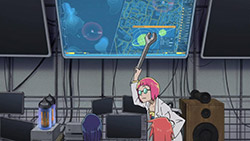 |
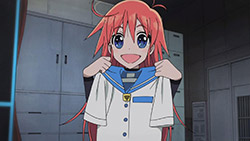 |
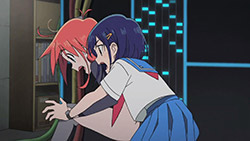 |
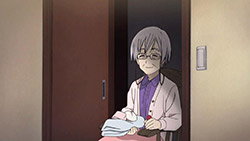 |
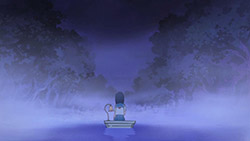 |
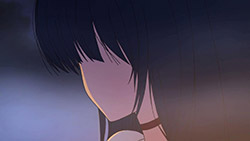 |
 |
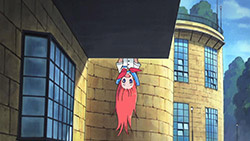 |
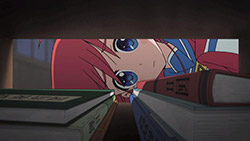 |
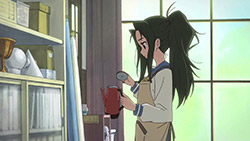 |
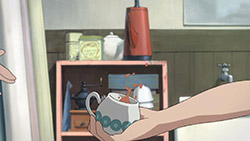 |
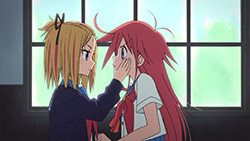 |
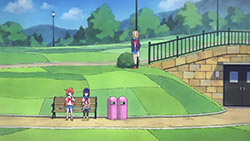 |
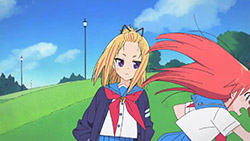 |
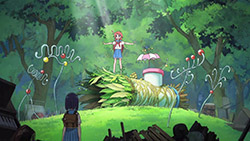 |
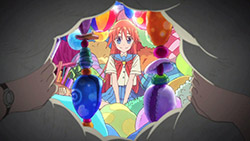 |
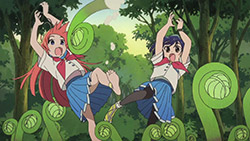 |
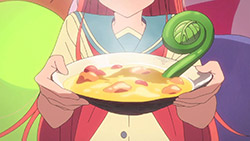 |
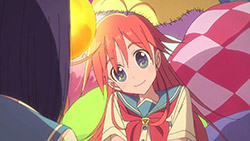 |
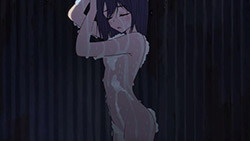 |
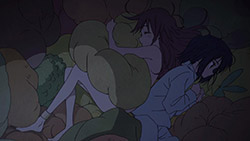 |
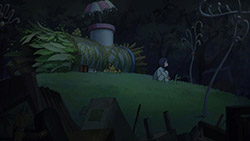 |
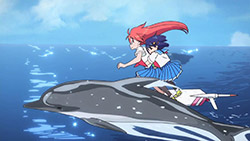 |
 |
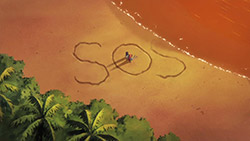 |
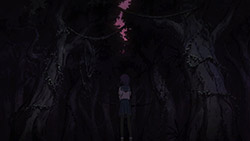 |
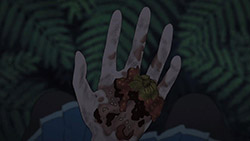 |
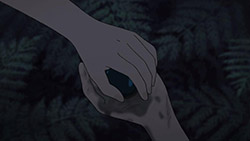 |
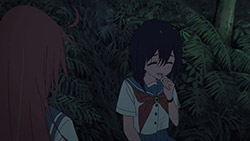 |
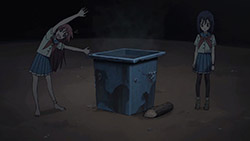 |
 |
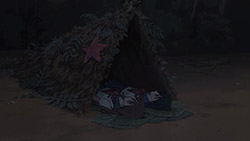 |
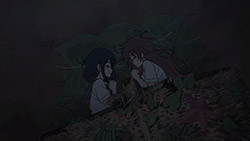 |
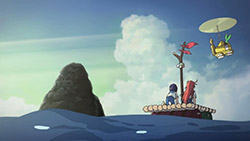 |
 |
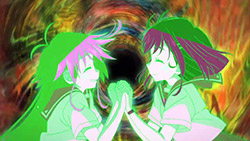 |
「ピュアイコライゼーション」 (Pyuaikoraizēshon)
“Pure Equalisation”
Last week, I was talking about how Flip Flappers is strongest when not trying to make any sense, since then it’s free to do whatever surreal thing it pleases. It stands to reason, then, that it is conversely weakest when trying to explain itself. Unfortunately, as a show that lives on constant visual stimulus, Flip Flappers loses a lot of energy the moment it slows down. At the same time, though, it’s probably necessary for Flip Flappers to stop to catch its breath at some point, at least if it wants some kind of coherent narrative before the end instead of just a mass of ambiguous imagery. Not that a mass of ambiguous imagery can’t be compelling, mind you, but there’s already this whole magical girl anime going on already so I guess they might as well make something out of it.
Really, episode 04 is probably the best time for a transition, after making a good case for your show in the first three episodes and having stocked enough goodwill to afford a bit of a slowdown. And it’s not like Flip Flappers completely sacrifices its mystique for the sake of a plot; we can always still rely on the trippy dream sequences to deliver our dose of weird optics, and even though Flip Flappers does offer some explanation for all that has been going on, most of it was in the form of cryptic nonsense anyway. Unless it really does think ‘the amorphous’ is supposed to mean something, in which case, no. No, it does not. Stop it.
In any case, it’s probably less important that we know why everything is happening, and more important that Flip Flappers is questioning why everything is happening. Up until this point Cocona has mostly just been taken along for the ride without putting up much resistant to the frankly rather absurd idea of diving into a surrealistic parallel dimension to search for wish-granting widgets. What’s your motivation, Cocona? Well, she still doesn’t really have one, but it’s good that she acknowledges that. Being able to see her dead family is nice, of course, but there’s no sense that’s what really drove her. It’s supposed to be a deliberate contrast, I think, with Yayaka, who’s driven by—what was it?—TAKING OVER THE WORLD. It seems that, compared to the professional fragment-collecting team, the Cocona and Papika duo don’t have any grand purpose in what they’re doing. They’re just out adventuring and experiencing the Power of Friendship (or, at least, the power of shameless shoujo-ai). There’s a point to be made here, I’m sure.
Staying out of Pure Illusion for an episode is also a good opportunity to take a better look at the world outside, at the normal status quo. Except that there’s really no ‘normal’ in Flip Flappersexcept on a relative scale. We already had a sense that the entire setting of Flip Flappers was rather strange, and now we know for sure. Perhaps it’s simply more juxtaposition here, in that even in the ‘real world’ (if we can call it that) there’s very distinctly the civilised Cocana’s side (quiet and teatime) and wild-child Papika’s side (giant rampaging kiwi birds). Or perhaps everything we see is coloured by our knowledge of Pure Illusion. We sort of expect strangeness, now. Take Cocona’s kindly grandmother, for example. In another setting, she could just be an unimportant family member, but here? This is a surreal fairy tale setting; either the old lady gets eaten by a wolf, or she’s somebody we need to keep an eye on.
Well, no matter how the grandmother turns out, the straight-up wackiness resumes again next week. Now that there are two distinct teams competing, I wonder how the dynamic of these little adventures will change. I hope it’s no less crazy, at least.
Preview
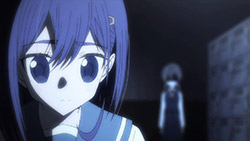 |
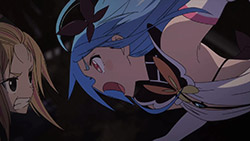 |
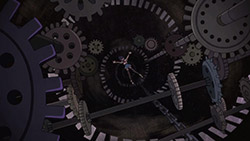 |

and wild-child Papika’s side (giant rampaging kiwi birds).
To make that even more surreal: that first night with the plant gathering and egg stealing was all on top of their school’s roof.
We expect Pure Illusion to be bizarre and surreal, but the weirdness in their “ordinary” world is stranger in its own way, because it doesn’t have an excuse.
Oh, bleh. Screwed up the quote.
We’re still trapped in the Matrix! Ahhhhh!
I kind of take umbrage at the part where Papika says she won’t let go near the episode and is super caring about Cocona, despite how barely five minutes before that, she ran ahead leaving Cocona behind in that tall grass and dark forest for a while. She was still in visible distance, and Papika couldn’t seem to hear Cocona call out to her which I feel is a bit of a jerk move. Also, this school has a nutty layout if one of its exits is under a bridge in the middle of a park.
And after that instance of Papika coming in to take Cocona away from talking to the art girl, it made me think of Jim Carrey from The Cable Guy who played an obsessive, borderline insane person to just want to hang with and annoy Broderick’s character by almost any means. Some people can find amusement in that kind of character given the tone, but for me, and this is just pure personal opinion, Papika kind of goes from being endearing to being invasive, and that really makes me not enjoy her character. It’s completely fine if you like her, but that character archetype and how they’re pushing it in this show., I have a hard time being fond of it.
And Yayaka is still best character. She knows her goals and is overly calm about it. “Yeah, world domination, what of it?” No distractions, just a clear path through.
Papika is very much a child, it seems, and she runs mostly on impulses. And of course., children are either very endearing, get on your nerves, or perhaps even both at the same time.
Yeah, it makes so much more sense if you try to see Papika’s character as a child rather than a genki pre-teen. She behaves like an 8-years-old in most of the situations, so while it’s reasonable to say that the ending of the episode depicts ‘The Power of Friendship’, I think that it’s more like a child’s infatuation from Papika’s side.
this was a very effective episode of flip flappers. I think it worked wwell in terms of fleshing out papika and cocona by just having them be exposed to each other. The show didnt feel the need to have them monologue about themselves or explain their backstory; rather it aptly demonstrates the effect something has simple as having two people exposed to each other for a certain period of time can have on their ability to become closer. Cocona not wanting papika to let go at the end was the perfect way to end the episode after exploring the idea of them becoming closer.
Like wanderer mentioned, the fact that this episode was a more subdued type of weirdness was for me, a pivotal strength of this week’s narrative. It was still very much weird and cooky, but it wasnt in your face about it. The imagery was still very surreal even when things seemed normal and i personally think that is an accomplishment in an of itself. This episode tried to tell a more subdued tale and even when the visual presentation seemed more subdued as a result, it retained the quirkiness from everything before it.
Yeah, it wasn’t crazy, but it was weird, and it gets into your head.
Another good episode. There’s been a bit of a hoo-hah about Cocona’s bathing scene, arguing about whether it was even necessary; I didn’t have a problem with it personally.
It seems that Flip Flappers is always going to be about sexuality on some level.
Cocona’s bathing scene is an example for ok fan service it’s fits in the flow of the episode and imo Cocona is way more sexy than Izetta, but it don’t really help to tell us more about Cocna’s character.
https://randomc.net/image/Flip%20Flappers/Flip%20Flappers%20-%2004%20-%20Large%2020.jpg
Jeez Louise. People are still mad about that?!
Ya need to see this if you havent; a treat for fans of flip flappers:
https://www.youtube.com/watch?v=8zBaKgJr7Ss
Of course someone took the opportunity LOL XD
Hahaha that’s what i said; i definitely got a kick out of watching it
Well, I’d definitely see a movie-long version of episode 3, but this fan trailer is also well-done, so thanks for sharing!
Second that!! Episode was hype as hell!
I wonder if arty sempai have anything thing to do with Pure Illusion.
That dream sequence.
Does it make Cocona special?
Or is it a product of her wanting to meet her family?
Papika.
What is her origin?
Is she human?
A happy Ayanami Rei 😛
The commander can be Gendo.
Papika, arty sempai and Cocona.
Kind of RGB hair color.
Yayaka’s side made me think of 20th Century Boys.
3 vs 2.
Would like more backstory and world view.
More about the Flip Flappers organization and the Yayaka side organization.
Maybe more about the fragments, some fantasy myth or prophecy?
So far its still the intimate story of the 2 girls.